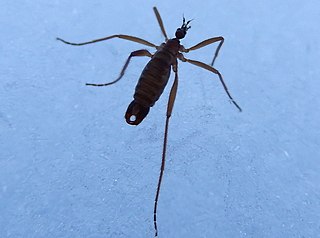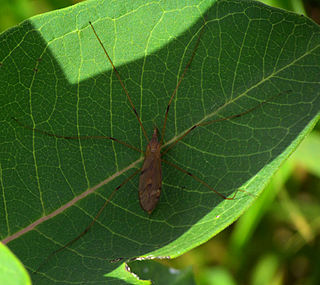
Convolvulaceae, known commonly as the bindweed or morning glory family, is a family of about 60 genera and more than 1,650 species of mostly herbaceous vines, but also trees, shrubs and herbs, and also including the sweet potato and a few other food tubers.

Dromaeosaurus is a genus of theropod dinosaur which lived during the Late Cretaceous period, sometime between 80 and 69 million years ago, in Alberta, Canada and the western United States. The type species is Dromaeosaurus albertensis, which was described by William Diller Matthew and Barnum Brown in 1922. Its fossils were unearthed in the Dinosaur Park Formation. Teeth attributed to this genus have been found in the Prince Creek Formation

Dinosaur Provincial Park is a UNESCO World Heritage Site situated a two hour drive east of Calgary, Alberta, Canada; or 48 kilometres (30 mi), about a half-hour drive northeast of Brooks.
Acipenser is a genus of sturgeons. With 17 living species, it is the largest genus in the order Acipenseriformes. They are native to Europe, Asia and North America, and most species are threatened. Sturgeon mainly live in the Atlantic ocean.

Styracosaurus is a genus of herbivorous ceratopsian dinosaur from the Cretaceous Period, about 75.5 to 75 million years ago. It had four to six long parietal spikes extending from its neck frill, a smaller jugal horn on each of its cheeks, and a single horn protruding from its nose, which may have been up to 60 centimeters long and 15 centimeters wide. The function or functions of the horns and frills have been debated for many years.

The Limoniinae are a paraphyletic assemblage of genera within the crane flies, Tipulidae, although they can usually be distinguished by the way the wings are held at rest. Limoniines usually hold/fold the wings along the back of the body, whereas other tipulids usually hold them out at right angles. Snow flies such as Chionea scita have no wings at all. Limoniines are also usually smaller than other tipulids, with some exceptions. Limoniinae are a very large assemblage with nearly 10500 described species in 133 genera, and were historically treated as a subfamily, but their classification is in flux; numerous authors recently treated the group at the rank of family, but subsequent phylogenetic analyses revealed that the remaining groups of tipulids render the group paraphyletic. These flies are found in damp places throughout the world, and many species form dense swarms in suitable habitats.

Chionea is a genus of wingless limoniid crane flies. It consists of two subgenera, the holarctic Chionea and palaearctic Sphaeconophilus. About 40 species are currently recognized in the northern hemisphere, but there are probably several undescribed species. They are commonly called snow flies.

Centrosaurinae is a subfamily of ceratopsid dinosaurs, a group of large quadrupedal ornithiscians. Centrosaurine fossil remains are known primarily from the northern region of Laramidia but isolated taxa have been found in China and Utah as well.
Asota chionea is a moth of the family Erebidae first described by Paul Mabille in 1878. It is found in Zaire.

Eriopterini is a tribe of limoniid crane flies in the family Limoniidae. There are more than 20 genera and 3,800 described species in Eriopterini.
Psiloscelis is a genus of clown beetles in the family Histeridae. There are about 8 described species in Psiloscelis.
Chionea scita is a species of crane fly in the family Limoniidae. C. scita is known as a type of snow crane fly because it is commonly seen walking on piles of snow during the winter months. These flies are also often observed in caves and heavily wooded areas. C. scita flies are small, hairy, wingless, and somewhat spider-like in appearance, unlike other flies.
Chionea alexandriana is a species of limoniid crane fly in the family Limoniidae.

Sweltsa is a genus of green stoneflies in the family Chloroperlidae. There are more than 50 described species in Sweltsa.
Chionea obtusa is a species of limoniid crane fly in the family Limoniidae.
Chionea valga, the snow fly, is a species of limoniid crane fly in the family Limoniidae.
Chionea stoneana is a species of limoniid crane fly in the family Limoniidae.
Chionea carolus is a species of limoniid crane fly in the family Limoniidae.
Aspergillus albertensis is a species of fungus in the genus Aspergillus. It is from the Flavi section. The species was first described in 1985. It was isolated from a human ear in Canada. A. albertensis has been shown to produce ochratoxin A and B. It forms yellow spores.

Stellasaurus is a genus of centrosaurine ceratopsid dinosaur that lived in Montana during the Late Cretaceous. The type and only species is Stellasaurus ancellae. Its remains have been found in the Late Campanian age Two Medicine Formation, the same geological unit which its relatives Rubeosaurus, Einiosaurus, and Achelousaurus were discovered in.









